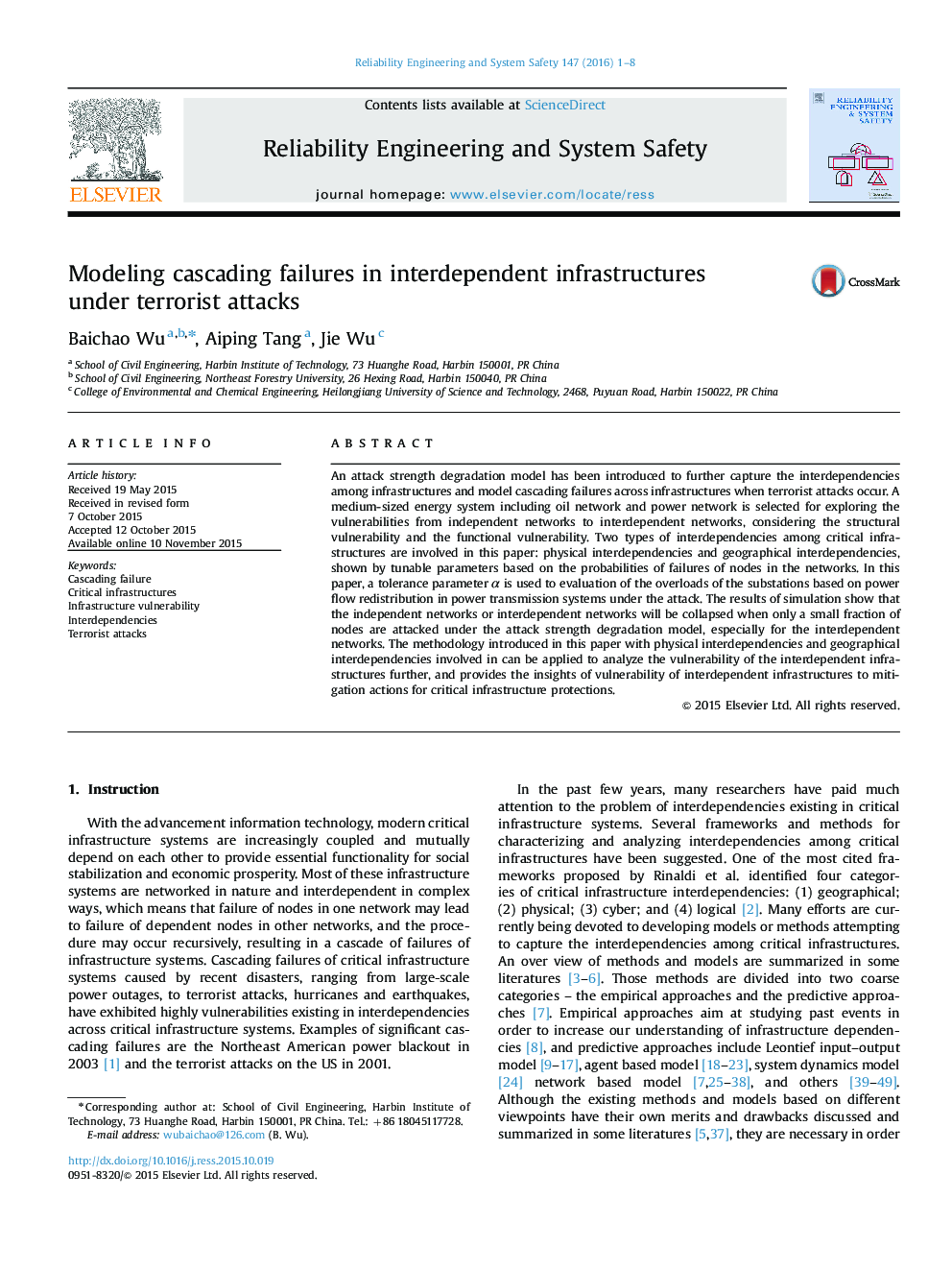| Article ID | Journal | Published Year | Pages | File Type |
|---|---|---|---|---|
| 806716 | Reliability Engineering & System Safety | 2016 | 8 Pages |
•An attack strength degradation model based on the specified locations has been introduced.•Interdependencies considering both physical and geographical have been analyzed.•The structural vulnerability and the functional vulnerability have been considered.
An attack strength degradation model has been introduced to further capture the interdependencies among infrastructures and model cascading failures across infrastructures when terrorist attacks occur. A medium-sized energy system including oil network and power network is selected for exploring the vulnerabilities from independent networks to interdependent networks, considering the structural vulnerability and the functional vulnerability. Two types of interdependencies among critical infrastructures are involved in this paper: physical interdependencies and geographical interdependencies, shown by tunable parameters based on the probabilities of failures of nodes in the networks. In this paper, a tolerance parameter α is used to evaluation of the overloads of the substations based on power flow redistribution in power transmission systems under the attack. The results of simulation show that the independent networks or interdependent networks will be collapsed when only a small fraction of nodes are attacked under the attack strength degradation model, especially for the interdependent networks. The methodology introduced in this paper with physical interdependencies and geographical interdependencies involved in can be applied to analyze the vulnerability of the interdependent infrastructures further, and provides the insights of vulnerability of interdependent infrastructures to mitigation actions for critical infrastructure protections.
